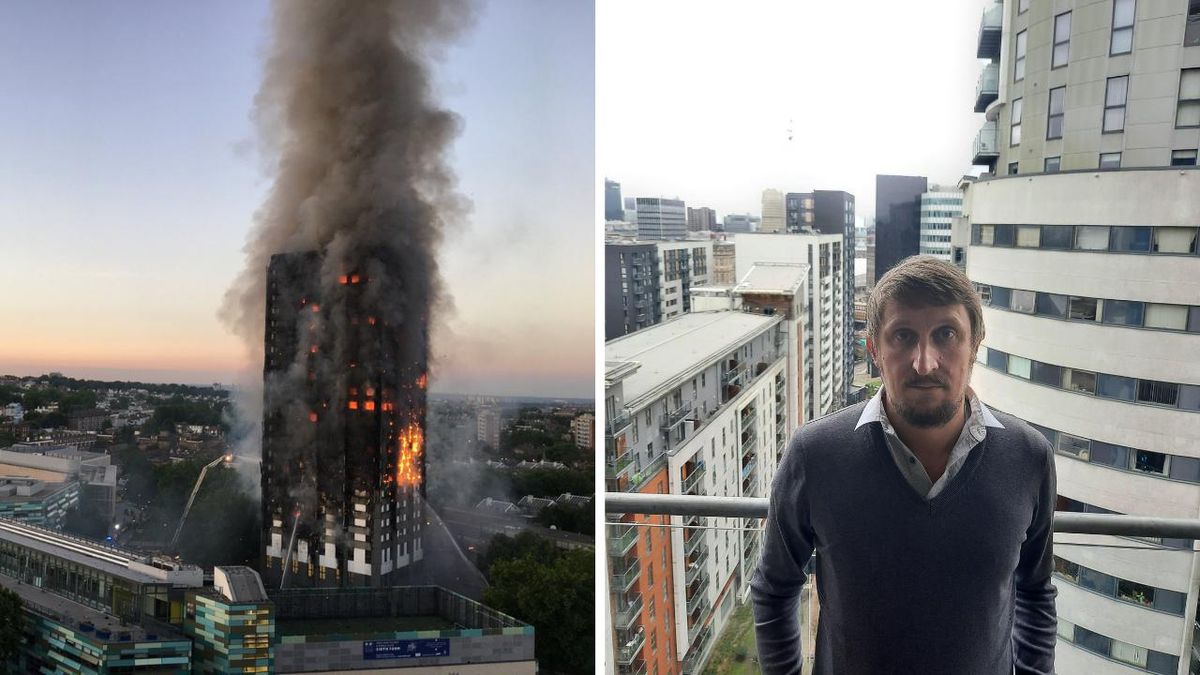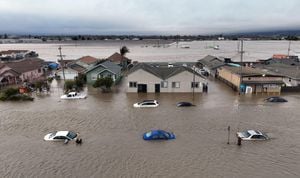The tragic Grenfell Tower fire remains etched in the minds of many as it cast light on serious disparities within the UK's fire safety regulations, particularly how they vary across socioeconomic groups. The incident not only claimed 72 lives but also exposed the deep inequalities between affluent properties and those managed for lower income residents.
A recent exploration of two very different tower blocks— the opulent Landmark Pinnacle and the aging Invicta House— highlights these disparities. The Landmark Pinnacle, located on London’s Isle of Dogs, stands as Europe’s tallest residential building at 784 feet, complete with luxurious amenities like gyms and stunning views of the Thames. By stark comparison, Invicta House, constructed over five decades ago, consists of just 14 floors and is part of a council estate, housing tenants who represent the lower end of the economic spectrum.
Seven years after the catastrophe at Grenfell, there have been notable shifts in regulations governing high-rises. Following the fire, new laws mandate buildings over 18 meters must feature two staircases: one for firefighters to ascend and another for residents to exit. While the Landmark Pinnacle was constructed with this standard in mind, Invicta House, with its antiquated design, continues to grapple with the challenges of having only one staircase to facilitate evacuation during emergencies.
The design and operation of high-rise buildings has undergone scrutiny since Grenfell, yet issues persist. Although Landmark Pinnacle was constructed with the latest safety standards, it too has had its share of issues including building lifts malfunctioning. Guy Benson, who resides there, comments on the building's modernity and his confidence in its safety, saying, "I don't feel at risk at all." He emphasizes the building's design includes features aimed at mitigating fire hazards.
On the other hand, residents of Invicta House voice concerns about their fire safety. The combustible polystyrene insulation on the building's walls was flagged for replacement after the Grenfell inquiry, yet no definitive timeline has materialized for the necessary renovations. Jane, one resident, recounted her anxiety when the fire alarm rang, stating: "I just shut the door," opting for safety over venturing down the staircase.
The common thread binding the residents of both buildings is their heavy reliance on elevators. For those who live on upper floors, like John at Invicta House, lift outages pose overwhelming challenges to basic mobility. John shared his frustrations over broken lifts, noting how repair crews often cannibalize parts from one lift to get the other functioning. The situation raises the alarming specter of what could happen during emergencies when lift access is compromised, leaving residents to depend on potentially perilous stairs.
While the responses of both properties indicate improvements, the fear lingers at Invicta House. Residents there remain vulnerable as they live with outdated infrastructure and designs. Dr. Barbara Lane, one of the experts from the Grenfell inquiry, points out this inequity. She stresses the importance of addressing the safety gaps between affluent and low-income housing, prioritizing rigorous building assessments, and developing efficient evacuation strategies for those at risk.
The fire safety experiences of residents underline not just disparities but systemic issues about how safety standards are enforced—or ignored—in social housing. The continual reliance on outdated designs raises pressing concerns about the long-term well-being of those living at Invicta House. Despite recommendations from the Grenfell inquiry, substantive action remains elusive.
Meanwhile, as discussions around fire safety standards and living conditions continue to evolve, communities affected by Grenfell remain vigilant. The call for justice and effective safety measures reverberates throughout the streets of Grenfell Tower's community, highlighting the responsibility lawmakers have not just to react, but to preemptively safeguard lives.
Through it all, the voices of survivors and affected residents act as reminders of the lessons learned—and not learned—since the fire. They remind us of the importance of listening to those living within the communities and advocating for equitable policies backed by stringent enforcement to safeguard lives, ensuring tragedies like Grenfell never occur again.




